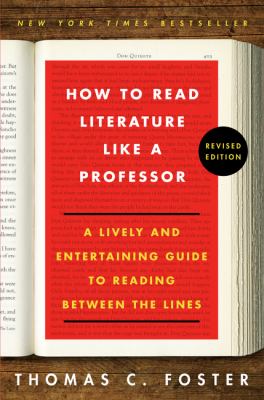
館長分享
To commence with, you may ask why readers want to read literature like a professor. Beyond doubts, reading is a direct and personal enjoyment. For example, reading romance fictions by Jane Austen or horror stories by Stephen King can already ignite different senses of emotions and pleasure in you. Nevertheless, have you ever had an odd sense of déjà vu when reading a new book or watching a new movie? Why are you so nervous, or sometimes foresee the demise of a heroic character out of thin air even when it was just your first time reading a book or watching an episode? This book not only gives you some clues, but also helps you to unlock the hidden rules of literature and to discover a new world of literature appreciation.
Do not be intimidated by the name of the book. The author, Professor Thomas C. Foster, has been teaching contemporary fiction, drama, creative writing and composition since 1975. With his profound knowledge in literature analysis, he introduces various literature devices in an entertaining way. He said in the book, “What I’m talking about is a grammar of literature, a set of conventions and patterns, codes and rules, that we learn to employ in dealing with a piece of writing”.
Professor Foster explains at the very beginning that the “language of reading” and “grammar of literature” are essential in literature appreciation, which help readers to unravel the mystery of literary analysis. In simple language, Professor Foster brings us to the new light of patterns, codes and rules artfully interweaved in literature, fictions and even in movies. Have you ever thought of the function of “weather” is not only a setting nor a coincidence, but also implies a certain inner context? Take “rain” as an example. It often associates with spring, birth and hope, which exerts a cleansing effect on characters. Like in “The Lion King”, the heavy downpour after Scar’s death symbolizes the cleansing of the soul of Simba and his re-birth.
There are more interesting observations concerning the plots and settings commonly found in stories and movies. In the chapter of “Never stand next to a hero”, the author enlightens the death of the main protagonists’ closest characters are often the catalysts to bring changes to the hero and to push the stories forward. Thus, Nick 'Goose' Bradshaw must sacrifice in order to make Pete ‘Maverick’ Mitchell a hero in “Top Gun”, and the loss of John Wick’s puppy is necessary to unveil the revenge story in “John Wick”. More elements like bargaining with devil in order to obtain power and the heroic quest of self-discovery are also analysed in the book.
In the final chapter, Professor Foster adds an extract of Katherine Mansfield’s “The Garden Party” to encourage readers to ponder on and analyse the literature elements he introduced, followed by his points of view. This helps to reinforce the skills readers acquired after reading the book. Besides, in the appendix, the author introduces books, short stories, and “movies to read”, which encourages readers to further explore the new world of literature appreciation.
There are more “How to read” series by Professor Thomas C. Foster, and Chinese editions are also available. Come and borrow the books, and ignite the hidden enjoyment of reading literature!

